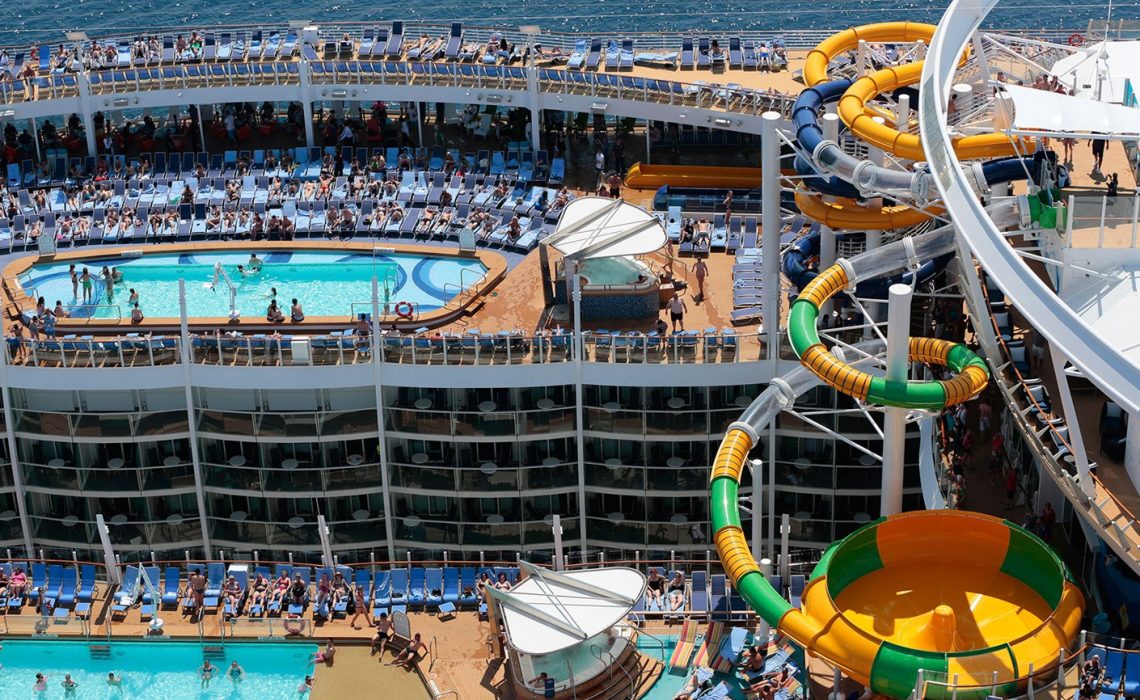
You might also like:
A resoundingly strong second-quarter profit reported by Royal Caribbean Cruises Ltd. (RCCL) has thrown into high relief the good year being enjoyed by cruise lines and, by extension, most travel retailers.
For the three months ended June 30, RCCL reported net income of $369.5 million, compared with $229.9 million in Q2 2016. Revenue rose 4.3%, to $2.2 billion.
Although some of the improvement is specific to Royal’s three brands, RCCL chairman and CEO Richard Fain said the lines are also riding the crest of a 2017 wave that is raising all boats in the business.
“Part of this appears to be industry-wide,” Fain said in a conference call with Wall Street analysts. “People have bought all the stuff that they need, and they’re now looking towards gaining more experiences.”
RCCL benefited from a host of positives in the second quarter, including a slightly weaker dollar, continued low fuel prices, a longer booking curve and an absence of serious terrorism events that has helped propel demand for high-priced European cruises on both sides of the Atlantic.
The only cloud on an otherwise clear horizon is China, where prices were down in the quarter because a March restriction on Chinese travel to South Korea upended itineraries and punched a hole in demand.
But for the most part it was a fairy tale quarter, leaving RCCL executives to marvel at their good fortune.
“All of our brands are performing at a level we’ve simply never seen,” said Fain, who went on to praise the officers and crew of the various brands, which include Royal Caribbean International, Celebrity Cruises, Azamara Club Cruises and some partly owned brands such as TUI Cruises and Pullmantur.
One program Fain cited as responsible for RCCL’s momentum was the “price integrity” policy adopted in early 2015, which put curbs on discounts late in the sales cycle.
One idea behind the program was to reinforce the pledge that bookings far in advance of sailing would carry the lowest prices.
Fain said the policy, as expected, cost revenue in 2015 and 2016, but as consumer behavior shifted it has now contributed to the robust 10% increase in revenue yields that RCCL recorded in the second quarter.
“Once we established our consistency and credibility with the travel agents, with the public and with our own revenue managers, the benefits started flowing in,” Fain said.
Parallel to the price integrity program, RCCL has been pushing out the booking window by getting passengers to commit a longer number of days before departure when purchasing their cruise.
With less inventory to sell, the remaining cabins are in shorter supply, leading to higher close-in pricing, prompting more early booking, a virtuous cycle.
Fain said RCCL’s booking curve is at record levels, and that rather than try to ratchet it out further, the company will now be spending more time trying to bring up prices.
Confident it can do so, RCCL increased its profit guidance for all of 2017 by $65 million, to a range between $1.8 billion and $2 billion. In 2016, RCCL had net income of $1.28 billion.
After the report, analysts raised their profit projections and stock price targets for RCCL, with several saying it would be fully valued above $130 a share. RCCL shares have risen 77% from $67.35 at the start of August 2016 to $119.69 at the close of business on Aug. 4.
“RCCL’s second quarter exceeded already lofty expectations,” wrote Susquehanna Financial Group analyst Rachael Rothman, who raised her target from $132 a share to $134 after the record results.
Norwegian Cruise Line Holdings is expected to report on its second quarter on Aug. 8. Carnival Corp. has already issued second-quarter numbers and typically reports its third quarter in late September.
‘Surge in demand’ for Europe
For travel agents, perhaps the most encouraging news from RCCL was about Europe, where cruise retailers reap some of their highest commissions.
RCCL CFO Jason Liberty said that while most itineraries have benefited from strong consumer confidence in North America, it has been particularly evident on European sailings.
“Fewer geopolitical events and stable air pricing have contributed to a surge in demand from our higher-paying North American guests,” Liberty said. “As a result, North American guests will account for a larger percentage of Europe itinerary sourcing than in any other recent year.”
Liberty emphasized that 2017’s success might not repeat itself in 2018, because only in a rare year do all the stars align.
This year, “outside of the challenge that we’ve had with the South Korea sailings, everything has really kind of ended up in the better-than-expected column, and that’s not a typical year,” Liberty said.
RCCL’s China business is 10 years old in 2017 and has seen its ebbs and flows. In addition to tensions between Korea and China, it endured a period several years ago in which Japan and China disputed control over some islands each claimed, and China cut off Japan as a destination for a while.
Reliance on such an erratic market, steered closely by the Chinese government, might not seem advisable except for the long-term potential of the world’s most populous country. RCCL plans capacity reduction of about 10% next year in its Asia-Pacific segment.
Asked how that squares with optimism about China’s potential, Royal Caribbean International president Michael Bayley said there’s a difference between strategy and tactics.
“We’ve built a great brand in China,” Bayley said. “Changes in deployment in the short-term, we don’t consider as particularly meaningful in terms of the development of the market.”
Sоurсе: travelweekly.com
